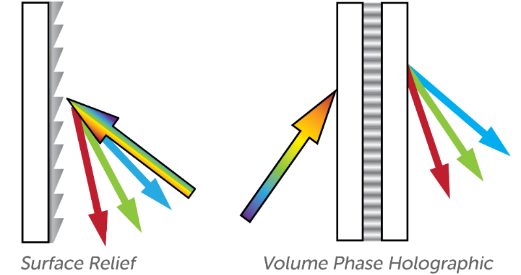


Resolving them corresponds to resolvanceĪnother standard example is the resolution of the hydrogen and deuterium lines, often done with a Fabry-Perot Interferometer.

The two sodium "D-lines" are at 589.00 nm and 589.59 nm. Where N is the total number of slits illuminatedand m is the order of the diffraction.Ī standard benchmark for the resolvance of a grating or other spectroscopic instrument is the resolution of the sodium doublet. This leads to a resolvance for a grating of Since the space between maxima for N slits isbroken up into N-2 subsidiary maxima, thedistance to the first mimimum is essentially1/N times the separation of the main maxima. The limit of resolution is determined by the Rayleigh criterion as applied to the diffraction maxima, i.e., two wavelengths are just resolved when the maximum of one lies at the first minimum of the other. Resolvance or "chromatic resolving power" for a device used to separate the wavelengths of light is defined as Examples of resolvance A similar color separation seen from thin layers of oil (or gasoline, etc.) on water, known as iridescence, are not caused by diffraction from a grating but rather by thin film interference from the closely stacked transmissive layers.Diffraction grating resolution Resolvance of Grating Decorative patterned plastic films based on reflective grating patches are inexpensive and commonplace. Diffraction colors also appear when one looks at a bright point source through a translucent fine-pitch umbrella-fabric covering. A usual diffraction grating has parallel lines (It is true for 1-dimensional gratings, but 2 or 3-dimensional gratings are also possible and they have their own applications such as wavefront measurement), while a CD has a spiral of finely spaced data tracks. Rainbow-like colors from closely spaced narrow tracks on optical data storage disks such as CDs or DVDs are an example of light diffraction caused by diffraction gratings. Ī diffraction grating can create "rainbow" colors when it is illuminated by a wide- spectrum (e.g., continuous) light source. Rogers (1804–1882) took over the lead and, by the end of the 19th century, the concave gratings of Henry Augustus Rowland (1848–1901) were the best available. Gratings with the lowest line-distance (d) were created, in the 1860s, by Friedrich Adolph Nobert (1806–1881) in Greifswald then the two Americans Lewis Morris Rutherfurd (1816–1892) and William B. Using these principles, Fraunhofer was the first who used a diffraction grating to obtain line spectra and the first who measured the wavelengths of spectral lines with a diffraction grating. The principles of diffraction were discovered by Thomas Young and Augustin-Jean Fresnel. This was similar to notable German physicist Joseph von Fraunhofer's wire diffraction grating in 1821. The first man-made diffraction grating was made around 1785 by Philadelphia inventor David Rittenhouse, who strung hairs between two finely threaded screws. James Gregory (1638–1675) observed the diffraction patterns caused by a bird feather, which was effectively the first diffraction grating (in a natural form) to be discovered, about a year after Isaac Newton's prism experiments. There are also gratings that modulate the phases of incident waves rather than the amplitude, and these type of gratings can be produced frequently by using holography. Such a grating modulates the amplitude of an incident wave on it to create a diffraction pattern. Diffraction gratingįor typical applications, a reflective grating has ridges or rulings on its surface while a transmissive grating has transmissive or hollow slits on its surface. Optical component which splits light into several beamsĪ very large reflecting diffraction grating An incandescent light bulb viewed through a diffractive effects filter.


 0 kommentar(er)
0 kommentar(er)
